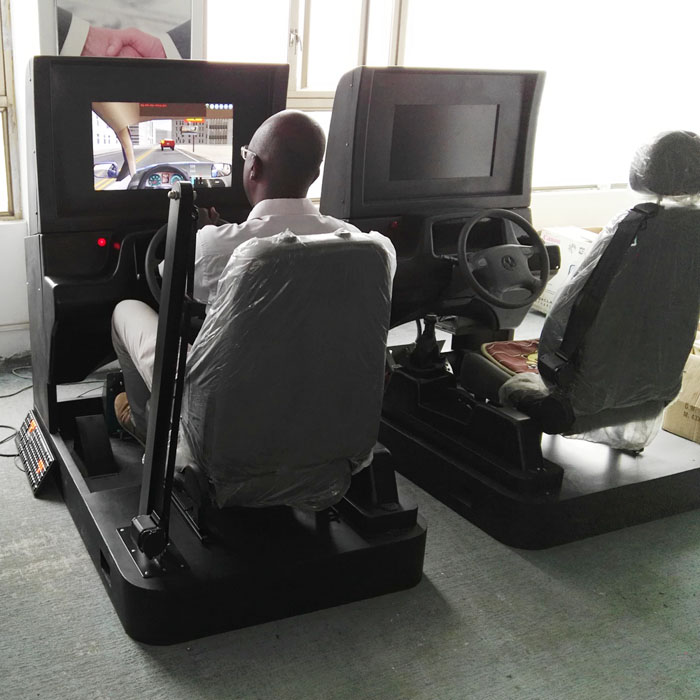- Why Car Simulators Are Great for Training
- Top 5 Tips for Better Car Simulator Driving
- How to Use These Skills in Real Driving
- FAQ
Car simulator driving is more than just a fun way to pass time—it's a powerful tool to develop real-world driving skills. Whether you're preparing for competitive racing or improving your everyday driving habits, mastering the art of simulator driving can boost your confidence and precision behind the wheel. Here are five essential tips to take your virtual driving experience to the next level.
Why Car Simulators Are Great for Training
Car simulators create a safe environment for learning complex driving techniques without the risks of the open road. With advanced physics modeling, you can understand how vehicles react under different circumstances, develop muscle memory, and build spatial awareness. They are perfect for perfecting braking, cornering, and acceleration techniques before hitting actual streets or tracks.
Top 5 Tips for Better Car Simulator Driving
Set Up Your View Correctly
Achieving an accurate field of vision while using a simulator is critical for judging distances and speed.
Position screens or VR headsets so that they align closely with your eye level while seated. This improves visibility and immersion.
Adjust the field of view in the settings to ensure the depth perception reflects what you'd normally experience on the road.
Use a multi-monitor setup or head tracking systems, if possible, to enhance peripheral vision for sharp corners.
Ensure your seating posture promotes comfort and a clear line of sight. Proper setup minimizes eye strain and helps you stay focused during long sessions.
Master Smooth Steering
Steering with precision not only makes you faster in races but also reduces wear on your vehicle.
Place your hands at the 9 and 3 o'clock positions on the wheel for better control and reduced fatigue.
Practice steering fluidly to eliminate sudden or jerky movements. Imagine holding a delicate egg to guide your movements.
Familiarize yourself with counter-steering techniques to correct slides on challenging track conditions, such as wet or icy surfaces.
Focus on anticipating turns rather than reacting to them. This leads to smoother, more consistent cornering.
Improve Pedal Control
Effective pedal management is essential for maintaining stability and building speed.
Learn to modulate the brake pedal by pressing firmly at first, then gradually easing off as you approach corners. This allows for smoother deceleration and better entry into turns.
Avoid slamming down on the accelerator abruptly. Instead, squeeze the gas pedal gently when exiting corners to maintain traction and avoid spin-outs.
Experiment with left-foot braking, especially if you're driving a car with manual gears. This technique helps balance speed while cornering.
Use the simulator’s telemetry feedback to analyze braking and acceleration patterns for performance improvement.
Learn Tracks in Chunks
Memorizing every turn and marker on long circuits can take time. Breaking the track into smaller segments makes learning faster.
Start at slow speeds to observe key corners and understand track layouts.
Note landmarks like braking markers, apex points, and acceleration zones for better race strategy.
Gradually increase your speed as you get familiar with each segment of the track.
Use simulators with replay functionality to review and refine your lines after practice laps.
Adjust Your Virtual Car
Customizing your virtual vehicle lets you adapt to the challenges of each track and racing style.
Configure tire pressure and suspension to suit various road conditions. Softer tires offer better grip but may wear quickly, while harder compounds last longer but reduce traction.
Increase brake sensitivity to improve stopping ability if you're overshooting corners frequently.
Lower suspension stiffness if the car feels unstable on straights or rough patches. This can prevent unnecessary sliding.
Test different gear ratios and aerodynamic configurations to optimize speed and responsiveness.
How to Use These Skills in Real Driving
Car simulators aren’t just educational tools; they can sharpen skills that translate to the real world. By applying simulator-learned techniques, you can:
Enhance your precision when steering to avoid sudden lane changes or over-corrections.
Smoothly modulate the throttle and brake for safer, more controlled driving—not only in races but during everyday commutes.
Plan driving routes effectively using track learning techniques, whether in city traffic or unfamiliar highways.
FAQ
Q:Can simulator driving tips help my real driving?
A:Absolutely! Skills such as steering control and pedal sensitivity practiced in simulators often improve real-world driving techniques as they build muscle memory and improve awareness.
Q:How often should I practice driving simulation?
A:Practicing in short 30-minute sessions several times a week is ideal. Regular practice builds consistency and helps retain skills over time.
Q:What basic setup do I need for a great experience?
A:Invest in a steering wheel with pedals for accurate control, and make sure to adjust your seat and screens for a natural driving posture. This gives a more authentic experience compared to controllers.
Q:Do graphics quality affect learning to drive?
A:Advanced graphics help make the experience more immersive, but prioritize smooth frame rates and precise force-feedback systems to better simulate real-world driving mechanics.
Q:Can simulators replace real driving lessons?
A:Simulators help refine technical skills but won't substitute for real-world driving lessons where road laws and hazard management are essential.
Read More:
Al Shamil Vehicle Testing Dubai:A Complete Guide for Car Owners
Used Cars Under 10,000 AED:Smart Buying Tips & Top Picks
Maruti Ciaz Interior:Smart Design & Comfort Features Explained








